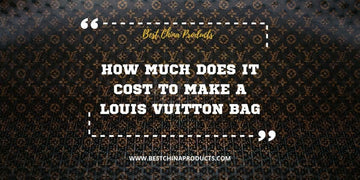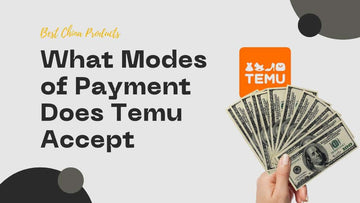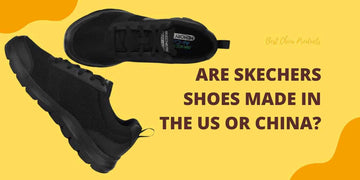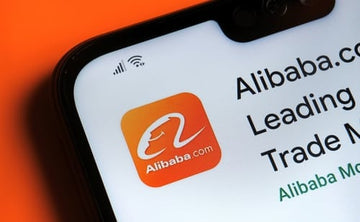Curious about what makes a Louis Vuitton bag so expensive? Let’s break down the 6 key factors behind its high price and discover what really goes into crafting these luxury icons.
How Much Does It Cost to Make a Louis Vuitton Bag?
A recent viral video featuring Tanner Leatherstein, a leatherworker, provides insight into the actual cost of manufacturing a Louis Vuitton bag.
Tanner disassembled a Louis Vuitton bag and analyzed the materials and labor involved in its production.
He concluded that the bag, which retails for around $1,700, is made mostly from coated canvas, which he described as "glorified plastic trash." According to Tanner's estimation, the raw materials and labor used in making the bag cost around $170.
He emphasized that the bag's price is significantly inflated compared to its actual manufacturing cost.
While the bag may lack the quality of leather, Tanner acknowledged that purchasing a Louis Vuitton bag is often driven by the desire for status.
The video provides an alternative perspective on the value proposition of luxury fashion items.

6 Factors Behind the Price Tag
Determining the exact manufacturing costs of Louis Vuitton handbags is a closely guarded secret, as the luxury brand does not publicly disclose this information.
However, several crucial elements allow us to estimate the markup on these world-renowned accessories.
Meticulous Material Selection
Renowned for their commitment to excellence, Louis Vuitton exclusively employs the finest exotic skins, leathers, and coated canvases in their iconic handbags.
Even when procured in bulk, these materials come at a cost, which is ultimately passed on to the consumers.
Impeccable Craftsmanship

Every Louis Vuitton handbag is meticulously handcrafted, necessitating the involvement of highly skilled artisans. Before working on a bag, craftsmen must complete a rigorous year-long training process to master the necessary skills.
With an average of 100 steps and some designs exceeding 300, each bag requires 3 to 4 hours to complete.
The manufacturing takes place in 20 Louis Vuitton workshops across France, Spain, and the United States, with the company deliberately avoiding outsourcing to maintain their high-quality standards.
Such elaborate manufacturing processes undoubtedly contribute to the unparalleled quality but also inflate the price tags.
Unmatched Demand

The tremendous demand for Louis Vuitton products is a testament to their brand equity. In 2021, the company's value reached a staggering $14.86 billion, solidifying its position as the most valuable fashion brand globally.
However, this immense popularity also comes with a downside, as Louis Vuitton products are the most counterfeited in the world.
Reports from Entrupy, a company specializing in authentication, revealed that Louis Vuitton accounted for 50.9% of the products they assessed in 2019.
Surprisingly, many customers willingly purchase knock-offs, even at higher prices than genuine products from other brands. Such unwavering demand strengthens the justification for Louis Vuitton's pricing strategy.
Lavish Marketing Campaigns

Louis Vuitton's extravagant marketing campaigns have played a vital role in shaping its desirability over the years.
These campaigns, featuring renowned celebrities like Emma Stone, Jennifer Connelly, Millie Bobby Brown, and Tyler, The Creator, come at a staggering cost.
In 2020 alone, the company invested approximately $5.1 billion in global marketing efforts.
Notably, endorsements from A-list celebrities, such as Angelina Jolie in 2011, required significant financial investments, with Louis Vuitton reportedly spending $10 million on her image for a single campaign.
Luxurious Retail Spaces

Louis Vuitton's retail spaces are strategically located in premier locations worldwide, reflecting the brand's commitment to exclusivity. Renting prime real estate comes at an exorbitant price.
For instance, the annual rent for their 12,900-square-foot store in Rome's Via Condotti amounts to $14.6 million, equating to approximately $1,135 per square foot.
Similarly, the flagship store in Paris, spanning 19,375 square feet, incurs an annual rent of $26 million due to its prestigious location.
The costs skyrocket even further for their 18,800-square-foot store in Hong Kong, with an astounding $51 million per year, or approximately $2,714 per square foot.
These substantial expenses are necessary as Louis Vuitton exclusively sells its products through its own stores and official websites.
No Sales or Discounts
In a unique approach, Louis Vuitton never offers discounts or sales on its handbags.
Instead, if a particular bag achieves its sales goals or experiences a decline in demand, the company chooses to discontinue its production.
To maintain exclusivity and preserve their brand image, Louis Vuitton takes stringent measures to prevent their products from entering the black market at reduced prices.
Unsold bags are meticulously destroyed to ensure that customers are incentivized to purchase at the original price, further supporting the brand's premium pricing strategy.
Estimating the Manufacturing Expenses
Although the exact cost of producing a Louis Vuitton handbag remains undisclosed, we can draw insights from similar luxury brands. In the past, top luxury handbags were reported to have a markup of around 20%.
However, a 2018 VOX article revealed that Gucci, a comparable brand, operated on a markup of 10 times the production cost.
Assuming a similar markup for Louis Vuitton, considering its comparable manufacturing practices and higher price range, it is plausible that the production cost of most Louis Vuitton bags amounts to a few hundred dollars, despite their significantly higher retail prices.
The Ever-Increasing Prices
If you have contemplated purchasing a Louis Vuitton handbag, now might be the best time. The luxury brand recently announced price increases due to growing manufacturing costs.
However, the demand for Louis Vuitton shows no signs of diminishing, with the fashion house continuing its reign over the handbag industry for years to come.
Are Authentic Louis Vuitton Products Made in China?

No, Louis Vuitton products are manufactured in workshops located in France, Spain, Italy, and the United States.
The leather goods collections, which are a significant part of their offerings, are exclusively produced in these countries.
- The footwear and ready-to-wear collections are manufactured in France and Italy.
- The watches are made in timepiece workshops in Switzerland.
- Jewelry collections are realized in France, Italy, and Switzerland.
- Sunglasses are manufactured in France and Italy.
- Fragrances and candles are made in Grasse, France.
Throughout all these workshops, Louis Vuitton maintains a tradition of excellence and refinement by carefully selecting the finest materials and employing experienced craftsmen to ensure the quality of their products.
Conclusion
The elevated prices of Louis Vuitton handbags can be attributed to a combination of factors, including the use of top-quality materials, meticulous craftsmanship, soaring demand, extravagant marketing campaigns, prime retail spaces, and a deliberate absence of sales or discounts.
Whilelouis the precise cost of manufacturing remains undisclosed, estimates suggest a significantly higher markup compared to other luxury brands.
With its unwavering appeal and iconic status, Louis Vuitton retains its position as a symbol of luxury and exclusivity, attracting customers who value the brand's heritage and craftsmanship above all.
Related






